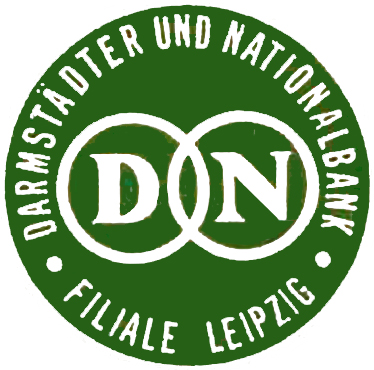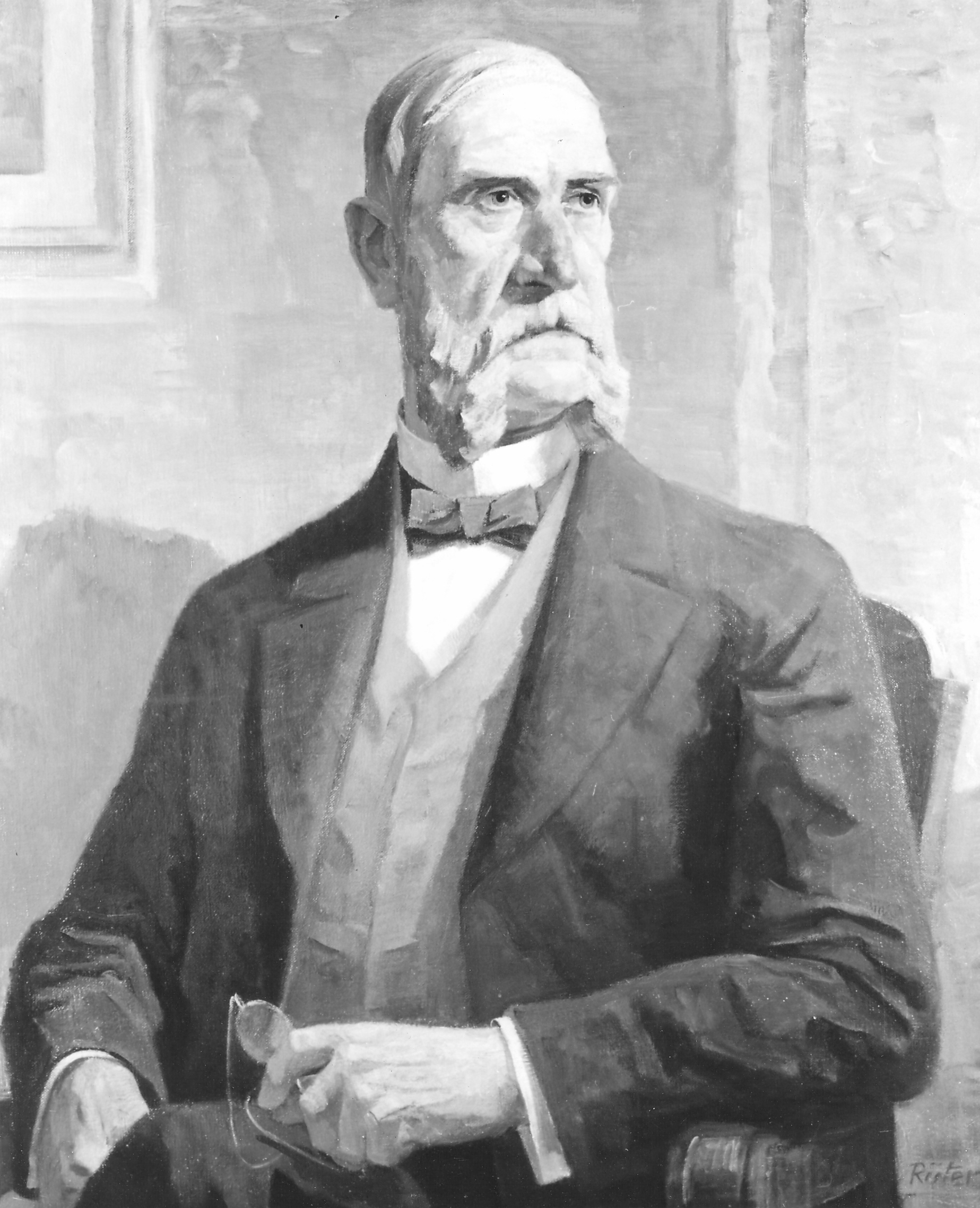|
Bayerische Hypotheken- Und Wechsel-Bank
The ''Bayerische Hypotheken- und Wechsel-Bank'' (, also known as Hypo-Bank) was a German bank founded in 1834 in Munich. It developed into one of the largest regional banks in Germany, before merging in 1998 with Bayerische Vereinsbank to form HypoVereinsbank (HVB). Overview The Bayerische Hypotheken- und Wechsel-Bank was founded by law of on the initiative of King Ludwig I of Bavaria, following discussions going back to 1818. It started operations on , with the king as one of its founding shareholders. While established as a stock corporation, it was under tight government supervision and its commercial business was initially limited to mortgages. In 1836, it was granted the privilege to issue notes in Bavaria and kept it until the creation of the Reichsbank in 1875, when the purpose-created Bayerische Notenbank took it over. It also had the right to issue Pfandbriefs from 1864, eventually developing into the largest mortgage bank in Germany in the late 19th century. Until ... [...More Info...] [...Related Items...] OR: [Wikipedia] [Google] [Baidu] |
Danat-Bank
The ''Darmstädter und Nationalbank'', in shorthand Danat-Bank or Danatbank, was a large German joint-stock bank. It was formed in 1922 from the merger of the Bank für Handel und Industrie (Darmstadt), known as Darmstädter Bank, and the Nationalbank für Deutschland. Its failure in July 1931 was a significant episode of the European banking crisis of 1931. Overview In 1920/1921, the ''Darmstädter Bank für Handel und Industrie'' and the ''Nationalbank für Deutschland'' formed the bank union ''Darmstädter-Nationalbank Berlin''. Both banks assumed a joint guarantee of capital and reserves of over 1 billion marks. The merger was fully completed in 1922, resulting in one of the largest commercial banks in Germany. By 1930, Danat-Bank had become Germany's second-largest joint-stock bank, with total deposits of 2.4 billion Reichsmarks ahead of Dresdner Bank (2.3 billion), Commerz- und Privatbank (1.5 billion), Reichs-Kredit-Gesellschaft (619 million), and Berliner Handels-Ge ... [...More Info...] [...Related Items...] OR: [Wikipedia] [Google] [Baidu] |
1834 Establishments In The German Confederation
Events January–March * January 1 – Zollverein (Germany): Customs charges are abolished at borders within its member states. * January 3 – The government of Mexico imprisons Stephen F. Austin in Mexico City. * January – The Wilmington and Raleigh Railroad is chartered in Wilmington, North Carolina. * February 3 – Wake Forest University is founded as the Wake Forest Manual Labor Institute in Wake Forest, North Carolina. * February 12 – Freed American slaves from Maryland form a settlement in Cape Palmas, it is named the Republic of Maryland. * February 13 – Robert Owen organizes the Grand National Consolidated Trades Union in the United Kingdom. * March 6 – York, Upper Canada, is incorporated as Toronto. * March 11 – The United States Survey of the Coast is transferred to the United States Department of the Navy, Department of the Navy. * March 14 – John Herschel discovers the open cluster of stars now known as NGC 3603, observing from the Cape of Good ... [...More Info...] [...Related Items...] OR: [Wikipedia] [Google] [Baidu] |
Banks Established In 1834
A bank is a financial institution that accepts deposits from the public and creates a demand deposit while simultaneously making loans. Lending activities can be directly performed by the bank or indirectly through capital markets. As banks play an important role in financial stability and the economy of a country, most jurisdictions exercise a high degree of regulation over banks. Most countries have institutionalized a system known as fractional-reserve banking, under which banks hold liquid assets equal to only a portion of their current liabilities. In addition to other regulations intended to ensure liquidity, banks are generally subject to minimum capital requirements based on an international set of capital standards, the Basel Accords. Banking in its modern sense evolved in the fourteenth century in the prosperous cities of Renaissance Italy but, in many ways, functioned as a continuation of ideas and concepts of credit and lending that had their roots in the ancie ... [...More Info...] [...Related Items...] OR: [Wikipedia] [Google] [Baidu] |
Defunct Banks Of Germany
Defunct may refer to: * ''Defunct'' (video game), 2014 * Zombie process or defunct process, in Unix-like operating systems See also * * :Former entities * End-of-life product In Industry (economics), industry, product lifecycle management (PLM) is the process of managing the entire lifecycle of a product from its inception through the Product engineering, engineering, Product design, design, and Manufacturing, ma ... * Obsolescence {{Disambiguation ... [...More Info...] [...Related Items...] OR: [Wikipedia] [Google] [Baidu] |
State Of Israel
Israel, officially the State of Israel, is a country in West Asia. It Borders of Israel, shares borders with Lebanon to the north, Syria to the north-east, Jordan to the east, Egypt to the south-west, and the Mediterranean Sea to the west. Israeli-occupied territories, It occupies the Occupied Palestinian territories, Palestinian territories of the West Bank in the east and the Gaza Strip in the south-west. Israel also has a small coastline on the Red Sea at its southernmost point, and part of the Dead Sea lies along its eastern border. Status of Jerusalem, Its proclaimed capital is Jerusalem, while Tel Aviv is the country's Gush Dan, largest urban area and Economy of Israel, economic center. Israel is located in a region known as the Land of Israel, synonymous with the Palestine (region), Palestine region, the Holy Land, and Canaan. In antiquity, it was home to the Canaanite civilisation followed by the History of ancient Israel and Judah, kingdoms of Israel and Judah. Situate ... [...More Info...] [...Related Items...] OR: [Wikipedia] [Google] [Baidu] |
Commerzbank
The Commerzbank Aktiengesellschaft (shortly known as Commerzbank AG or Commerzbank ) is a European Financial institution, banking institution headquartered in Frankfurt am Main, Hesse, Germany. It offers services to private and entrepreneurial customers as well as corporate clients. The Commerzbank Group also includes the German brand Comdirect Bank and the Polish subsidiary mBank. As one of the oldest banks in Germany, Commerzbank plays a significant role in the country's economy. It is the largest financier of German foreign trade, with strong ties to the German 'Mittelstand.' In addition, it maintains a presence in all major economic and financial centers worldwide. Since its establishment in 1870, Commerzbank has undergone several changes. It was the first German banking institution to open an operational branch in New York City in 1971. Another milestone was the acquisition of Dresdner Bank in 2009. During the 2008 financial crisis, the Federal Republic of Germany became a ... [...More Info...] [...Related Items...] OR: [Wikipedia] [Google] [Baidu] |
Anschluss
The (, or , ), also known as the (, ), was the annexation of the Federal State of Austria into Nazi Germany on 12 March 1938. The idea of an (a united Austria and Germany that would form a "German Question, Greater Germany") arose after the unification of Germany, 1871 unification of Germany excluded Austria and the German Austrians from the Prussian-dominated German Empire. It gained support after the Austria-Hungary, Austro-Hungarian Empire fell in 1918. The new Republic of German-Austria attempted to form a union with Germany, but the 1919 Treaty of Saint-Germain-en-Laye (1919), Treaty of Saint Germain and Treaty of Versailles forbade both the union and the continued use of the name "German-Austria" (); they also stripped Austria of some of its territories, such as the Sudetenland. This left Austria without most of the territories it had ruled for centuries and amid economic crisis. By the 1920s, the proposal had strong support in both Austria and Germany, particularly ... [...More Info...] [...Related Items...] OR: [Wikipedia] [Google] [Baidu] |
Aryanization
Aryanization () was the Nazi term for the seizure of property from Jews and its transfer to non-Jews, and the forced expulsion of Jews from economic life in Nazi Germany, Axis powers, Axis-aligned states, and their occupied territories. It entailed the transfer of Jewish property into "Aryan race, Aryan" or non-Jewish hands. "Aryanization" is, according to Kreutzmüller and Zaltin in ''Dispossession: Plundering German Jewry, 1933-1953'', "a Nazi slogan that was used to camouflage theft and its political consequences." The process started in 1933 in Nazi Germany with transfers of Jewish property and ended with the Holocaust. Two phases have generally been identified: a first phase in which the theft from Jewish victims was concealed under a veneer of legality, and a second phase, in which property was more openly confiscated. In both cases, Aryanization corresponded to Nazi policy and was defined, supported, and enforced by Germany's legal and financial bureaucracy. Michael Baz ... [...More Info...] [...Related Items...] OR: [Wikipedia] [Google] [Baidu] |
European Banking Crisis Of 1931
The European banking crisis of 1931 was a major episode of financial instability that peaked with the collapse of several major banks in Austria and Germany, including Creditanstalt on , Landesbank der Rheinprovinz on , and Danat-Bank on . It triggered the exit of Germany from the gold standard on , followed by the UK on , and extensive losses in the U.S. financial system that contributed to the Great Depression. The causes of the crisis included a complex mix of financial, fiscal, macroeconomic, political and international imbalances that have nurtured a lively debate of historiography. Background Germany's banking sector shrank dramatically from 1913 to 1924 but expanded rapidly again in the later 1920s, with fivefold growth of aggregate bank assets between 1924 and 1930. The banks were generally undercapitalized and overstretched following rapid balance sheet expansion in the late 1920s, with a preponderance of short-term debt, much of it foreign. Germany was the world's ... [...More Info...] [...Related Items...] OR: [Wikipedia] [Google] [Baidu] |
Berliner Handels-Gesellschaft
The ''Berliner Handels-Gesellschaft'' (BHG, ) was a significant German joint-stock bank, founded in 1856 in Berlin. It relocated to Frankfurt following World War II. On (with retroactive effect at ), BHG merged with Frankfurter Bank to form , referred to as BHF Bank from 1975 to 2017 and since then as ODDO BHF. Overview The foundation of the BHG in 1856 was inspired by the experience of the Crédit Mobilier in France (est. 1852) and its German emulator the Bank für Handel und Industrie in Darmstadt, or (est. 1853). Initially organized by Darmstädter Bank veteran Gustav von Mevissen, Gustav Mevissen, its founding sponsors included S. Bleichröder, , , Mendelssohn & Co., and . It was one of the first five large commercial banks in Germany, following the A. Schaaffhausen'scher Bankverein in Cologne (1848), the Disconto-Gesellschaft in Berlin (1851-1856), the Darmstädter Bank (1853), and the in Meiningen (1856). Like the Disconto-Gesellschaft, and unlike Schaaffhausen and t ... [...More Info...] [...Related Items...] OR: [Wikipedia] [Google] [Baidu] |
Reichs-Kredit-Gesellschaft
The ''Reichs-Kredit-Gesellschaft'' (RKG, ) was a significant state-owned German bank, located in Berlin. History The RKG originated in the war economy of Germany during World War I. In 1917, the Reich Treasury established a Statistical Office for War Companies () for the purpose of financing companies that had been set up to support the war effort. to balance the surplus and need for money in the war societies. After the war's end, the corresponding assets and liabilities were transferred to a "credit and control entity" (), a limited-liability company owned by the German government. On , the government-owned VIAG company founded the Reichs-Kredit-Gesellschaft mbH (private limited company) to take over the , and transformed it the next year into a joint-stock company, with as its general manager. The RKG was principally active in the areas of industrial and commercial credit, securities, asset management, and trade finance. By 1930, the RKG had become Germany's fifth-large ... [...More Info...] [...Related Items...] OR: [Wikipedia] [Google] [Baidu] |







